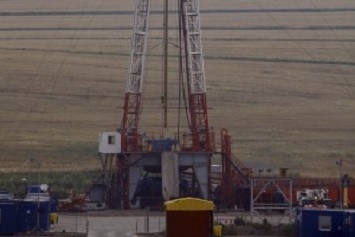In a document required by a judicial settlement with environmental and community groups, the EPA says it is not necessary at this time to revise federal regulations governing the management of exploration, development, and production (E&P) wastes generated by the oil and gas (O&G) industry.

According to the suit filed by the groups, the Agency’s existing regulations for O&G wastes under Subtitle D of the Resource Conservation and Recovery Act (RCRA) are decades old and not responsive to changes in the industry resulting from developments such as hydraulic fracturing and horizontal drilling. These technological innovations have resulted in more waste, particularly wastewater (produced water), coming to the surface at well sites and, at times, different kinds of waste, all of which require management under Subtitle D. But the EPA disagreed on the need for new or revised federal regulations primarily because the states in which most O&G activities occur have kept pace with industry changes to ensure that these wastes do not present high risks to public health and the environment.
The groups were not satisfied with the EPA’s determination that no action is necessary.
“Today’s decision not to act is the latest in a thirty-year history of EPA failing to address the environmental and health hazards of oil and gas wastes,” said Adam Kron, senior attorney at the Environmental Integrity Project, one of the groups that brought the EPA to court. “EPA has known since 1988 that its rules for oil and gas wastes aren’t up to par. Rather than acting in the best interest of the public, EPA has continually shirked its duties and left our communities’ health, drinking water, and environment at risk.”
States Given the Lead
A significant part of the dispute grew from the EPA’s 1988 regulatory determination that exempted E&P wastes from RCRA Subtitle C. Instead, the Agency said these very large volume wastes were more appropriately addressed through Subtitle D, which places the majority of regulatory oversight in the hands of the states.
In the current document, the EPA concedes that both hydraulic fracturing and directional drilling have the potential to impact the composition of E&P wastes because these technologies are accessing new and deeper resources. In addition, fracking and directional drilling have led to more wells being drilled. While individual wells may be minimizing produced water, the larger number of wells means that more wastewater is coming to the surface.
Still, the Agency believes that the states have adjusted to changes in the industry.
“These efforts have resulted in substantive changes to state regulations for pits, tanks, offsite disposal, centralized facilities, spill reporting, corrective action, remedial standards, and other areas,” the EPA states in the document.
Few Instances of Damage
The Agency also looked at release incidents involving E&P wastes, which resulted in “documented” adverse health impacts to humans and wildlife and impairment of habitat or degradation of natural resources. While state databases listed thousands of violations, the Agency’s review identified only eight cases that resulted in damage. These releases were typically caused by human error (e.g., overfilling tanks) and equipment failure (e.g., landfill liners damaged during solid’s removal).
“These types of releases can be appropriately and more readily addressed within the framework of existing state programs through increased inspections, improved enforcement, and other targeted actions than through the imposition of addition requirements under subtitle D of RCRA,” says the EPA.
The Agency concludes its review by stating that it will continue to work with states and other organizations to identify areas for continued improvement and to address emerging issues to ensure that E&P wastes continue to be managed in a manner that is protective of human health and the environment.
Impact on Communities
Representatives for several of the groups stated that the determination will allow releases of high-risk E&P wastes to the environment.
“Unfortunately states follow EPA’s lead, to the detriment of communities around the country hosting oil and gas operations,”said Aaron Mintzes, senior policy counsel for Earthworks. “EPA’s decision means fracking companies can dump these hazardous ‘non-hazardous’ wastes in landfills not designed for them and spread them on roads.”
